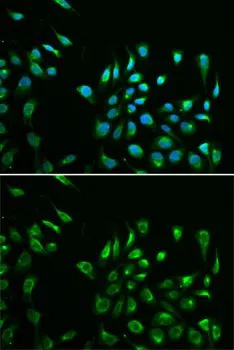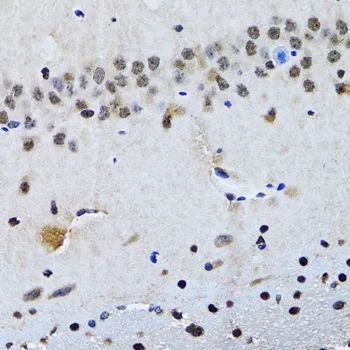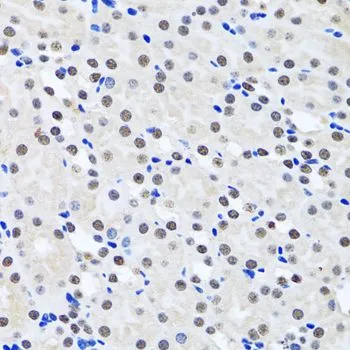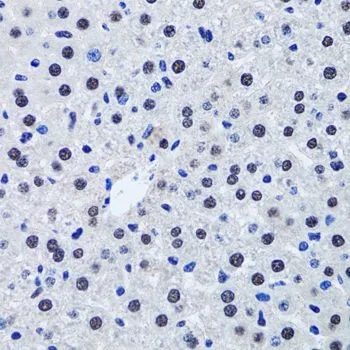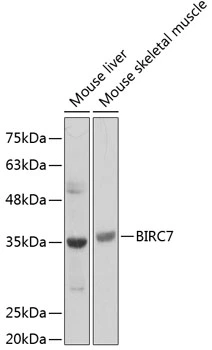
WB analysis of various sample lysates using GTX64543 Livin antibody. Dilution : 1:1000 Loading : 25microg per lane
Livin antibody

GTX64543
ApplicationsImmunoFluorescence, Western Blot, ImmunoCytoChemistry, ImmunoHistoChemistry, ImmunoHistoChemistry Paraffin
Product group Antibodies
ReactivityHuman, Mouse, Rat
TargetBIRC7
Overview
- SupplierGeneTex
- Product NameLivin antibody
- Delivery Days Customer9
- ApplicationsImmunoFluorescence, Western Blot, ImmunoCytoChemistry, ImmunoHistoChemistry, ImmunoHistoChemistry Paraffin
- CertificationResearch Use Only
- ClonalityPolyclonal
- ConjugateUnconjugated
- Gene ID79444
- Target nameBIRC7
- Target descriptionbaculoviral IAP repeat containing 7
- Target synonymsbaculoviral IAP repeat-containing protein 7; KIAP; kidney inhibitor of apoptosis protein; LIVIN; livin inhibitor of apoptosis; melanoma inhibitor of apoptosis protein; MLIAP; ML-IAP; RING finger protein 50; RING-type E3 ubiquitin transferase BIRC7; RNF50
- HostRabbit
- IsotypeIgG
- Scientific DescriptionThis gene encodes a member of the inhibitor of apoptosis protein (IAP) family, and contains a single copy of a baculovirus IAP repeat (BIR) as well as a RING-type zinc finger domain. The BIR domain is essential for inhibitory activity and interacts with caspases, while the RING finger domain sometimes enhances antiapoptotic activity but does not inhibit apoptosis alone. Elevated levels of the encoded protein may be associated with cancer progression and play a role in chemotherapy sensitivity. Alternative splicing results in multiple transcript variants [provided by RefSeq, Jul 2013]
- ReactivityHuman, Mouse, Rat
- Storage Instruction2°C to 8°C,-20°C or -80°C
- UNSPSC12352203

